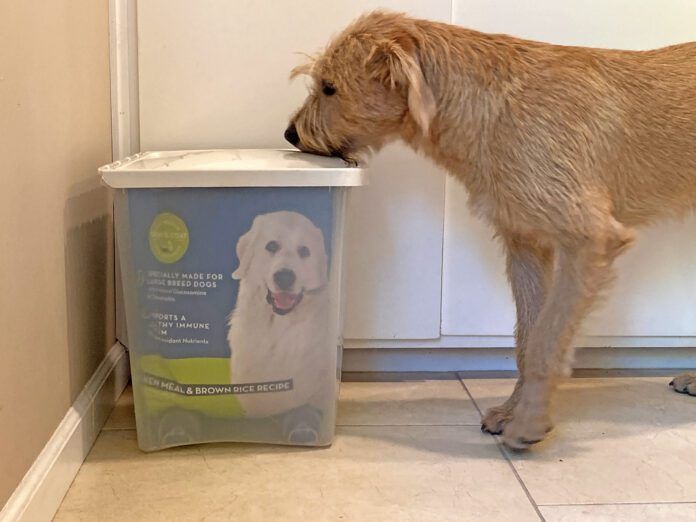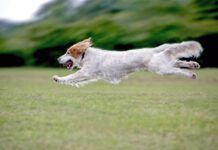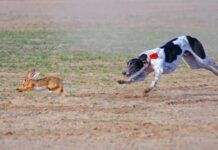
What’s the best way to store dry dog food? The perfect storage container is important – but focus first on what you’ll put into it:
When shopping, check the “best by” dates on the packages and don’t buy foods that are within six months of expiration. Buy the bags with the farthest-away expiration dates.
Buy an appropriate amount, only as much as you’ll use within a month to six weeks.
Buy a food that your dog enjoys. The fats in dry dog food become increasingly rancid with age, so an unfavorite food will smell and taste even worse to your dog as time passes.
Avoid These Mistakes in Storing Dog Food
Don’t store food in a warm or damp location or in direct sunlight. The U.S. Food & Drug Administration recommends storing dog food in a cool (below 80 degrees Fahrenheit), dry place to retard fat oxidation and prevent degradation of vitamins and antioxidants.
Don’t use your garage for storage unless it’s cool, dry, climate-controlled, clean, and free from rodents and insects.
Don’t transfer food from its original bag into a plastic bin or storage container. Chemicals in different types of plastic “migrate” into foods that contain fat. Dog food bags are made of plastics that have the lowest rate of additive migration.
Don’t toss the package the food came in before your dog finishes it. If your dog gets sick, you’ll need its manufacturer, brand name, ingredients, and specific lot number to tie the food to the problem.
Don’t add new food to old food, as doing so spreads any potential contamination to the new food and hastens the development of rancidity.
Use the Best Dog Food Storage Containers
Because it’s best to keep dry dog food in its original package, buy a container that’s large enough for the entire bag to fit inside. Ideal storage containers have an air-tight seal. Your options include:
- A rolling plastic bin with wheels that make it easy to move.
- A plastic storage vault with a circular lid that creates an air-tight seal.
- A metal storage bin with an air-tight lid, which will be more expensive but more durable than plastic. Metal bins also protect against sunlight exposure (and the potential for rodents to chew through the plastic to reach the food).
- Glass jars with air-tight lids. These work well for small dogs; just keep them in a safe place where they aren’t likely to break.
If you absolutely cannot deal with keeping your dog’s food in its original bag, and must dump it into a container, make certain that the container is either inert (glass or metal) or made of food-grade plastic that is free of bisphenol A (BPA-free). The international symbol for “food safe” material is a wine glass and a fork symbol. Also, you should wash the container with warm soapy water and allow it to dry completely before refilling it each time.





